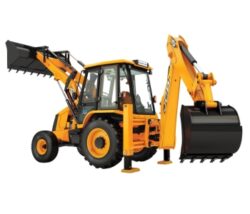A Guide to Propping and Formwork for Builders
Stabilizing structures against earthquakes and high winds necessitates the adoption of a crucial building technique known as propping in Christchurch, or bolstering up walls. When constructing a shared wall, it is vital to use the correct method for stability. It is essential to select the proper propping for your requirements, which may vary based on the type of structure and the terrain. This article will define propping and discuss how it may be used to stabilize structures in the shifting soil of Christchurch.
Definition of “Propping”
The procedure of reinforcing a wall with either temporary or permanent additions is known as shoring. Steel and wood are two examples of potential construction materials for these structures. They are available in a range of sizes and may be implanted into the earth for added stability. One of the many applications for propping is preventing irreparable damage from high winds and earthquakes. In many regions of the globe with limited soil resources, propping has become a common construction technique. The purpose of bolstering in Auckland is to safeguard a structure from natural disasters such as earthquakes and tornadoes. Its primary function is to prevent untimely wall and building failure in high-impact situations. Occasionally, this is done to safeguard or reduce the impact on vulnerable structures. In buildings, walls are frequently protected from the effects of weather and wind by means of support. During the final stages of a building’s construction, walls can also be supported with props.
Strategies for Stabilizing
Using props, a wall or other structure can be stabilized in a variety of methods. Following is a list of some of the most common conjunctions, along with an example of their use:-
An anchored structure may withstand the force of an earthquake or strong winds without collapsing. A series of holes drilled into the earth are used to connect an anchor structure to a wall.
To sustain a wall via capping, a structural member with a greater span than the wall is employed. This method is more expensive and time-consuming, but its results are more reliable.
Similar to anchoring, cribbing is a form of wall stabilization used with masonry walls. It is not as common as anchoring, but it is an excellent option for areas with weak soil.
The purpose of cripple walls is to prevent weak barriers from collapsing. They can serve as the first line of defense or as temporary wall reinforcements.
Components Used for Props
There are two main categories of staging elements: structural and non-structural props. Typical materials for building supports include steel, concrete, and wood. Soil and sediment are non-structural support materials.
Due to its durability and adaptability, steel is the material of choice for propping; it can be utilized with a variety of materials, including concrete and masonry.
Timber is the most popular material for supporting in Australia due to its durability and strength as a structure’s foundation. In addition, it can be used to reinforce structures made from brittle materials such as concrete.
Sandbags – In regions prone to shifting, sandbags are used to stabilize the soil. By holding sediment and water, they provide a foundation for construction. Even in strong winds, the sand acts as glue to keep the bag in position, while the water inside prevents the sand from shifting.
For More Info:-https://www.totalsitesupplies.co.nz/shop/hire/auckland-hire/propping-shoring-formwork-auckland/






















































